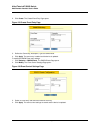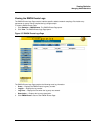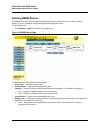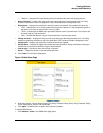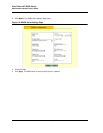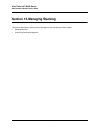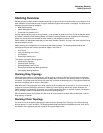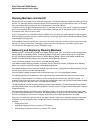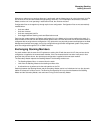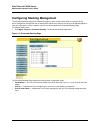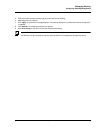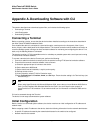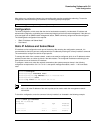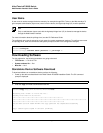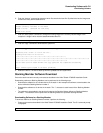
Page 170
Allied Telesis AT-8000S Switch
Web Browser Interface User’s Guide
Stacking Members and Unit ID
Stacking Unit IDs are essential to the stacking configuration. The stacking operation is determined during the boot
process. The Operation Mode is determined by the Unit ID selected during the initialization process. For example,
if the user selected stand-alone mode, the device boots as a stand-alone device.
The device units are shipped with the default Unit ID of the stand-alone unit. If the device is operating as a stand-
alone unit, all stacking LEDs are off. Once the user selects a different Unit ID, the default Unit ID is not erased,
and remains valid, even if the unit is reset.
Unit ID 1 and Unit ID 2 are reserved for Master-enabled units. Unit IDs 3 to 6 can be defined for stack members.
When the Stacking Master unit boots, or when inserting or removing a stack member, the Stacking Master initiates
a stacking discovering process.
If two members are discovered with the same Unit ID, the stack continues to function, however only the unit with
the older join time joins the stack. A message is sent to the user, notifying that a unit failed to join the stack.
For first time Unit ID assignment, see the Installation Guide.
Removing and Replacing Stacking Members
Stacking member 1 and stacking member 2 are Master-enabled units. Unit 1 and Unit 2 are either designated as
Stacking Master or Secondary Master. The Stacking Master assignment is performed during the configuration
process. One Master-enabled stack member is elected Stacking Master, and the other Master-enabled stack
member is elected Secondary Master, according to the following decision process:
If only one Master-enabled unit is present, it is elected Stacking Master.
If two Master-enabled stacking members are present, and one has been manually configured as the Stacking
Master, the manually configured member is elected Stacking Master.
If two Master-enabled units are present and neither has been manually configured as the Stacking Master, the one
with the longer up-time is elected Stacking Master.
If the two Master-enabled stacking members are the same age, Unit 1 is elected Stacking Master.
Two stacking member are considered the same age if they were inserted within the same ten minute interval.
For example, if Stack member 2 is inserted in the first minute of a ten-minute cycle, and Stack member 1 is
inserted in fifth minute of the same cycle, the units are considered the same age. If there are two Master-enabled
units that are the same age, then Unit 1 is elected Stacking Master.
The Stacking Master and the Secondary Master maintain a Warm Standby. The Warm Standby ensures that the
Secondary Master takes over for the Stacking Master if a failover occurs. This guarantees that the stack continues
to operate normally.
During the Warm Standby, the Master and the Secondary Master are synchronized with the static configuration
only. When the Stacking Master is configured, the Stacking Master must synchronize the Secondary Master. The
Dynamic configuration is not saved, for example, dynamically learned MAC addresses are not saved.
Each port in the stack has a specific Unit ID, port type, and port number, which are part of both the configuration
commands and the configuration files. Configuration files are managed only from the device Stacking Master,
including:
• Saving to the Flash
• Uploading configuration files to an external TFTP Server
• Downloading configuration files from an external TFTP Server



